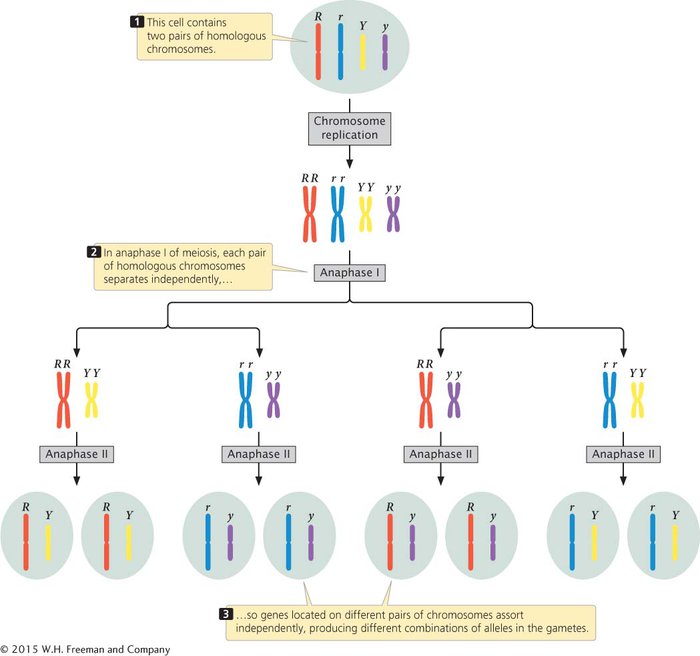Relating the Principle of Independent Assortment to Meiosis
An important qualification of the principle of independent assortment is that it applies to characteristics encoded by loci located on different chromosomes. Like the principle of segregation, it is based wholly on the behavior of chromosomes in meiosis. Each pair of homologous chromosomes separates independently of all other pairs in anaphase I of meiosis (Figure 3.9), so genes located on different pairs of homologs will assort independently. Genes that happen to be located on the same chromosome will travel together during anaphase I of meiosis and will arrive at the same destination—

CONCEPTS
The principle of independent assortment states that genes encoding different characteristics separate independently of one another when gametes are formed, owing to the independent separation of homologous pairs of chromosomes in meiosis. Genes located close together on the same chromosome, however, do not assort independently.
 CONCEPT CHECK 6
CONCEPT CHECK 6
How are the principles of segregation and independent assortment related, and how are they different?
Both the principle of segregation and the principle of independent assortment refer to the separation of alleles in anaphase I of meiosis. The principle of segregation says that these alleles separate, and the principle of independent assortment says that they separate independently of alleles at other loci.